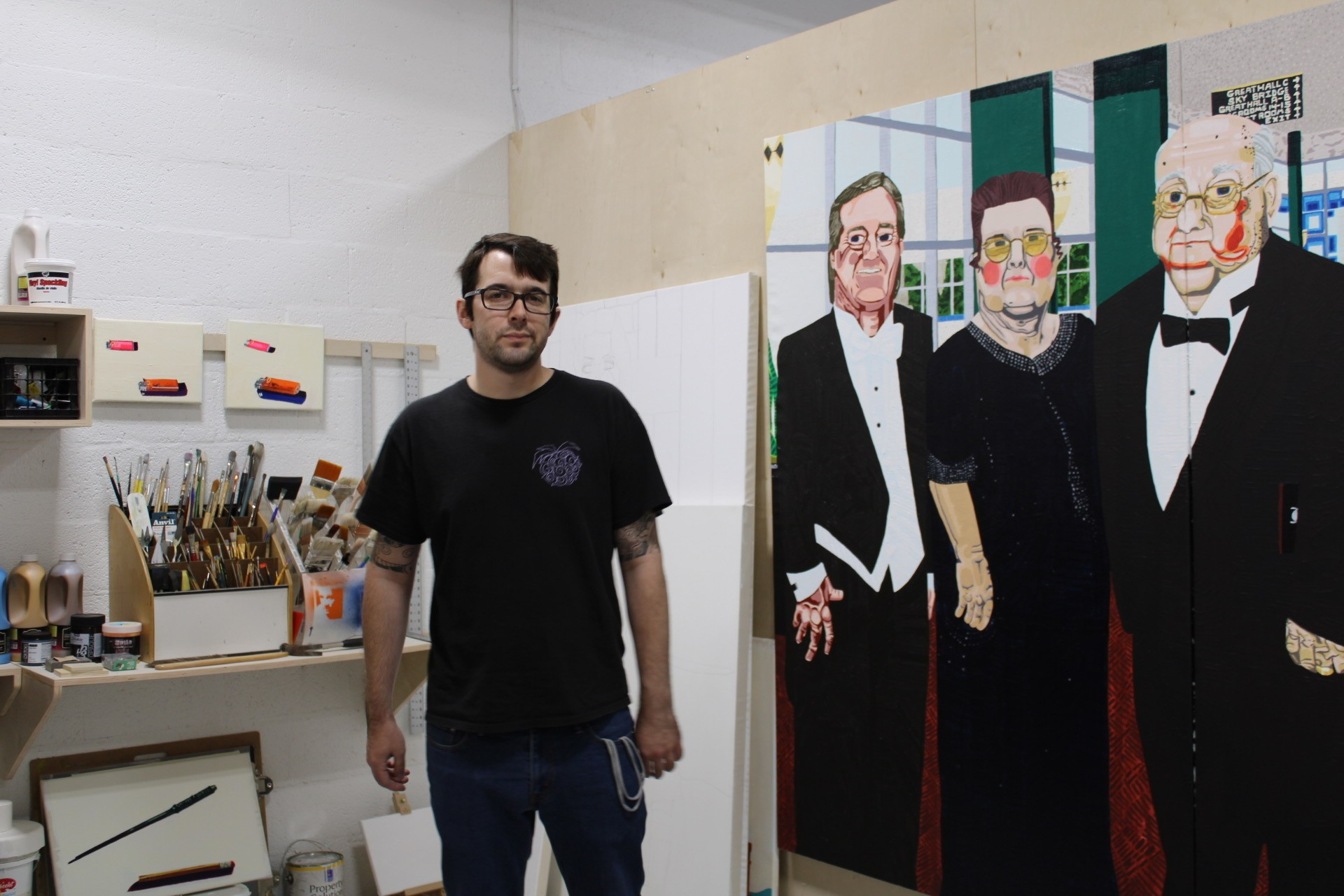We recently connected with Brantly Sheffield and have shared our conversation below.
Brantly , looking forward to hearing all of your stories today. Can you talk to us about how you learned to do what you do?
I learned to do what I do by going to art school. I attended the Kansas City Art Institute between 2010-2014. This was really the beginning of honing my craft. While I was at KCAI I was confronted with a bunch of different ways of working as well a variety of exercises and projects that where meant to prepare us for our own studio practice. I found myself using paint to compete most of my projects, so I gravitated towards the professors who’s work I liked that could guide me down the path of painting. From there I studied abroad to Florence. Italy to learn how to fresco paint, and in 2015 I moved to Boston to attend Boston University’s MFA painting program. The institutions give you time and space to hone your skills to develop your vernacular into a successful studio practice.
I don’t know that I could have sped this process up or that I would want too. I am still honing my craft, if anything I could have gone through my higher education more slowly. Being an artist is a marathon, not a sprint.
I don’t know what skill’s I learned are the most essential, but learning skills is essential to maintaining a healthy studio practice.
The obstacles I have to overcome in order to learn more is myself. I have to hold myself accountable to meet deadlines for residency and grant applications. Budgeting my life in order to afford my supplies and studio space.
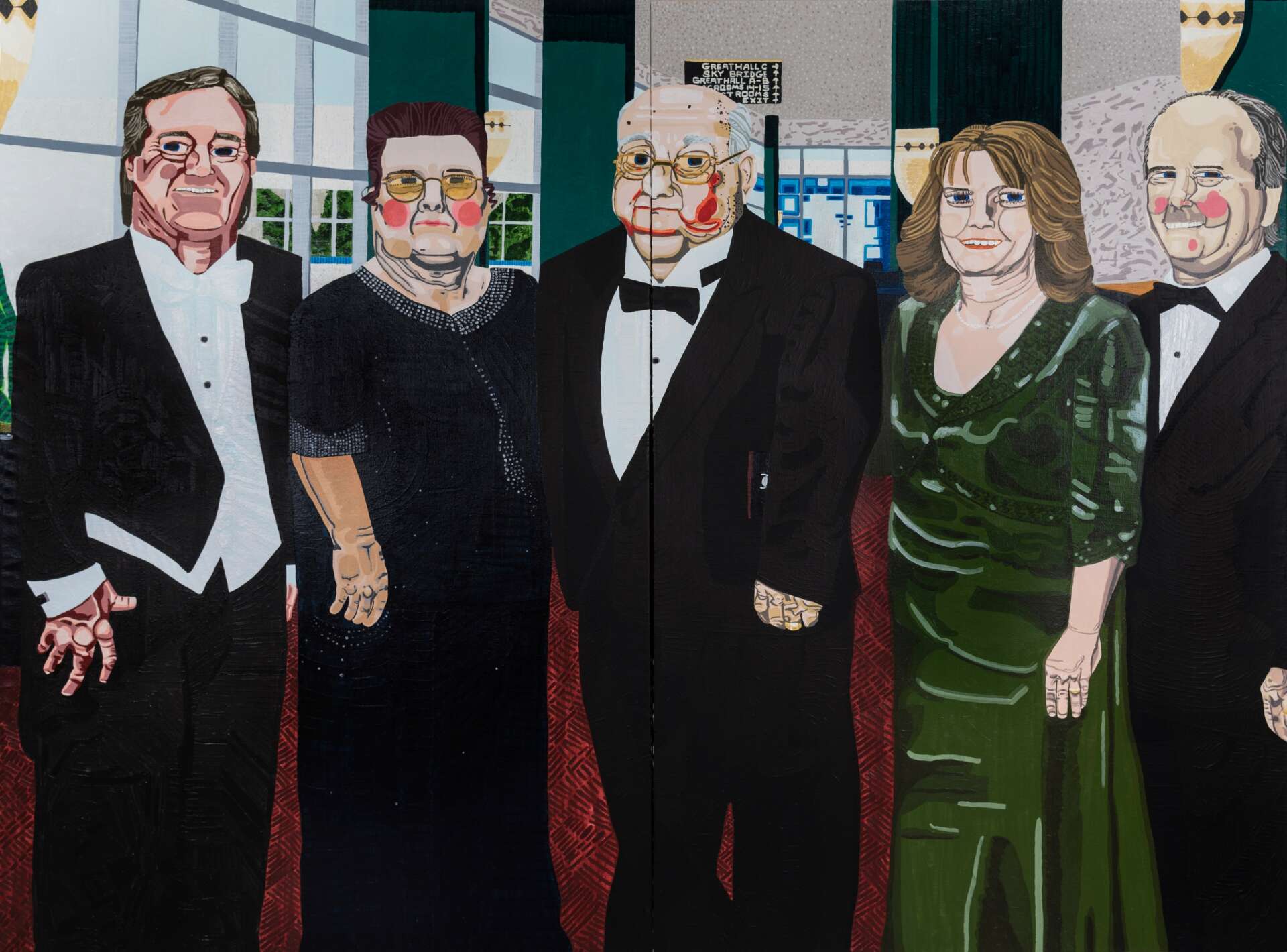
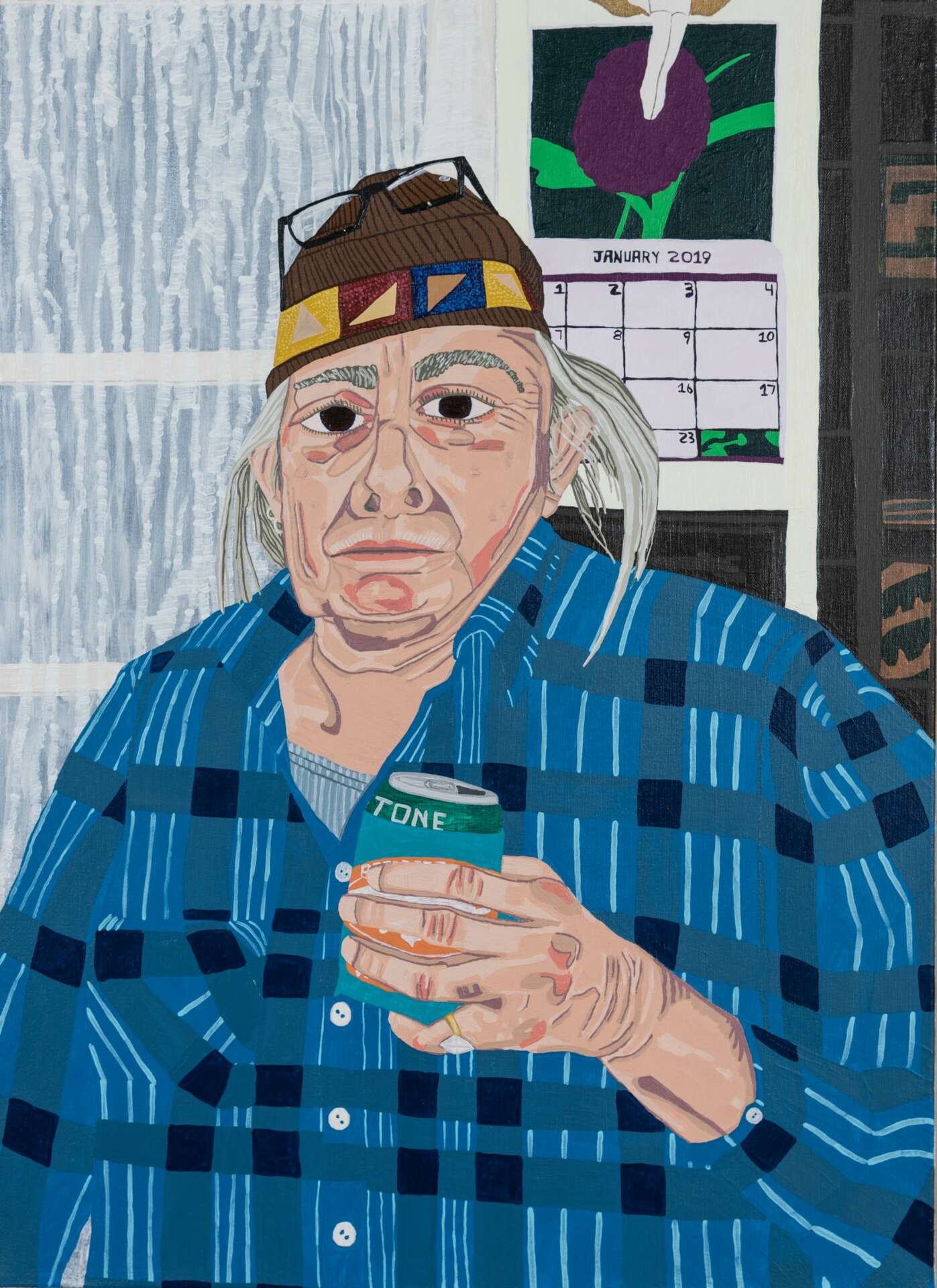
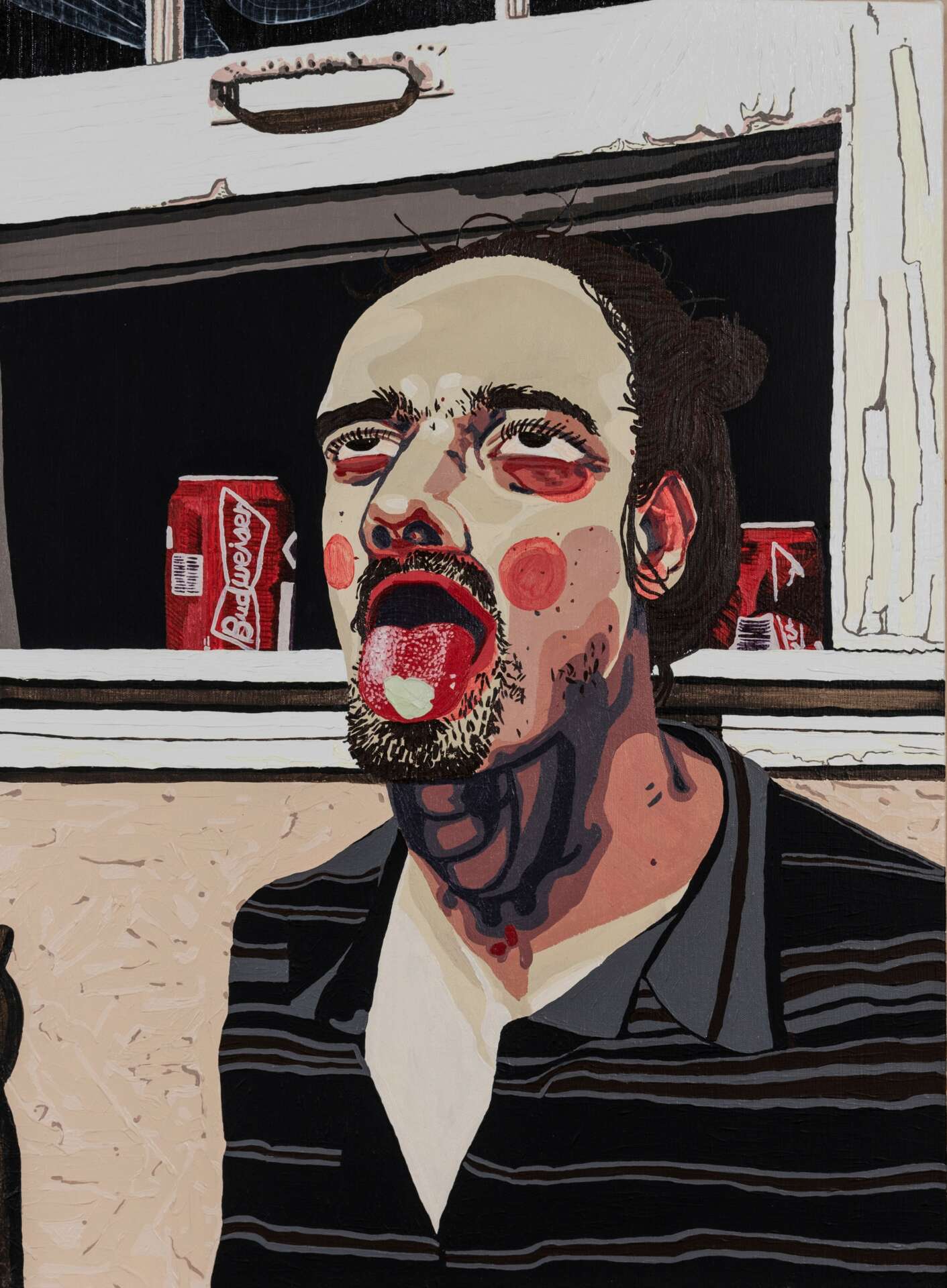
Brantly , before we move on to more of these sorts of questions, can you take some time to bring our readers up to speed on you and what you do?
My paintings and drawings are portraits of people in familiar social settings that fluctuate between memorable to forgettable. A documented moment acts as a roadmap for a drawing to structure information in my own way. I use paint to create an access point to a sense of universal familial bonds through saturated fields of color and geometric patterning that are indicative of familiar textures.
The subjects are personal. They range from the people I know, to memorable events, and forgotten moments. Painting helps bridge the gap between the extremely personal and the universally familiar through the history of art. Eye contact helps too. It makes you apart of its space. As if you could know subject.
I work with documented moments because it allows me to structure information in my own way through fields of color. I break down the subject into geometric forms through line, then I use saturated fields of color to create a geometric pattern that is indicative of the anatomy of the drawing and my memory of the moment in response to the material that guide how I delineate space. I believe that the totality of the materials creates an access point to a sense of universal familial bonds specific to each painting.
What can society do to ensure an environment that’s helpful to artists and creatives?
In my view society can support artists by buying their work. Investing in art organizations that give time and space to artists in order to make their work. Become a patron to one or several artists. Buy local, go to your local gallery openings, and buy what you like.
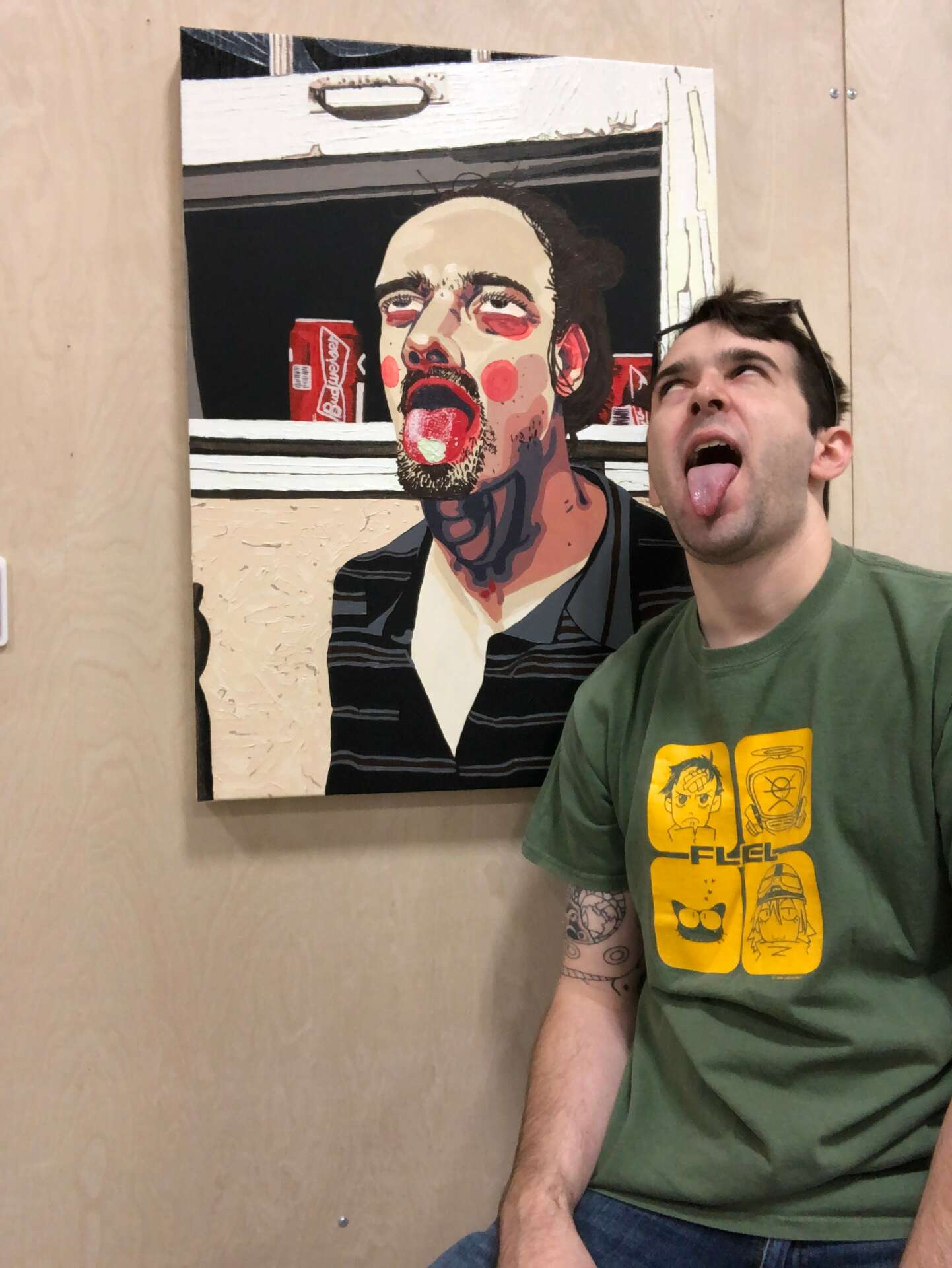

What do you find most rewarding about being a creative?
An aspect of my life I find rewarding is teaching. I am adjunct professor of art. I teach drawing and painting. I find that the conversations I have with my students about their work and the progress they make very rewarding. It gives me hope for the future too.
Contact Info:
- Website: https://www.brantlysheffield.com/
- Instagram: @brantly_sheffield


